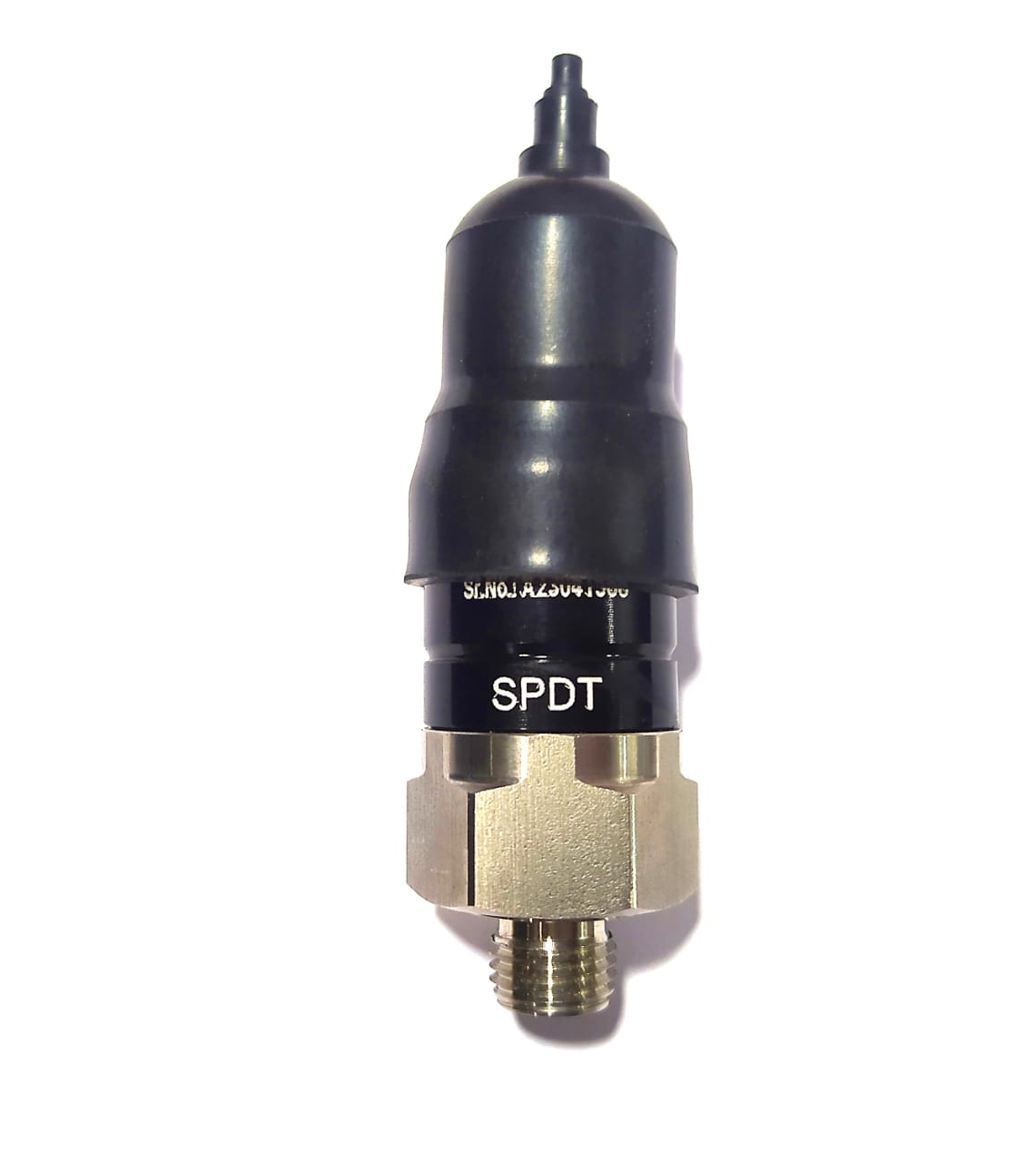Pressure Switch A pressure switch is a mechanical or electronic device that is activated when a certain threshold or setpoint is reached by the process fluid’s pressure. The pressure switch can differ depending on whether it consists of a bourdon tube, piston, diaphragm, or membrane that moves or deforms depending on the degree of pressure applied by the system. For example, an air pressure switch is used to maintain a constant pressure and can turn the compressor off once the tank reaches the required air pressure level. If the air pressure drops and more is required, the switch can also turn the compressor on. Pressure switches should not be confused with pressure transducers. The latter converts pressure into an electrical output signal. Click here to learn more about pressure transducers. A pressure switch consists of the following key components: Diaphragm – A diaphragm is used to detect pressure. The material is usually pliable and sensitive to pressure. Spring – Used in adjusting setpoints or cut-out points. Lever – Used to activate or deactivate the switch. Electrical contacts – Permit current to pass through them from an external power source. Terminals – To connect the external power source to the contacts. #Pressureswitchreliable #Bestpressureswitch

This is your website preview.
Currently it only shows your basic business info. Start adding relevant business details such as description, images and products or services to gain your customers attention by using Boost 360 android app / iOS App / web portal.


Submit Your Enquiry